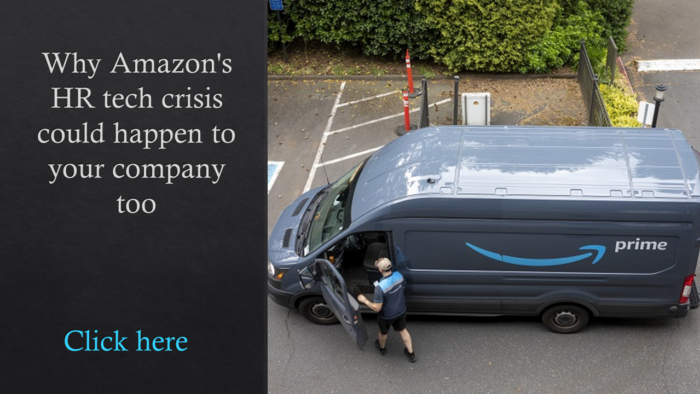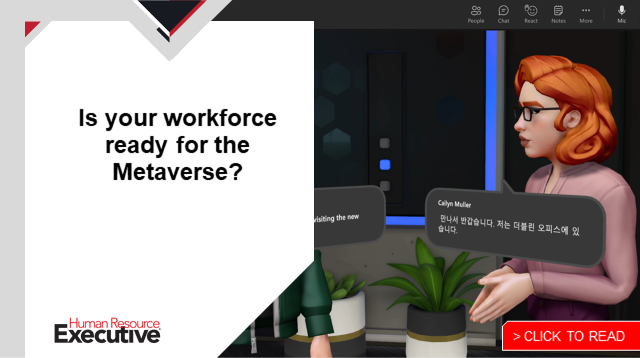This month, I would like to wrap up the first quarter of 2022 with the last piece in the series on “core” HR technology—this time focusing on benefits tech. Benefits technology has always been important for organizations and employees, but it can be argued that dealing with a global pandemic for two-plus years has made benefits even more critical. According to the recent Marsh McLennan report titled The age of adaptability: A digital-first approach to benefits in a post-pandemic world, more than 70% of organizations increased their spending on benefits as a result of the pandemic. That same report also indicated that 85% of benefits teams said their role had become more vital to the organization.
It’s not surprising that benefits teams have been placed in a vital position, with so many employees and their families being impacted by the pandemic. And like all categories of workplace technology, innovative solutions continue to be developed to improve and enhance the delivery of benefits programs to the workforce. Let’s examine three areas of benefits technology that have seen an increase in investment and capability.
See also: Benefits technology is having a moment—and COVID is partly responsible
- Employee mental health and wellbeing
Probably the single sub-category of benefits technology that has seen the most attention and growth in the last five years or so has been employee mental health and wellbeing. It really was not that long ago that employee mental health was hardly discussed when organizations were considering employee benefits more broadly; at that point, mental health benefits consisted of coverage in a medical plan for a limited number of professional mental health consultations and treatments. Employee mental health as a subject was even one that most of us felt uncomfortable raising in the workplace.
 Fast-forward to today, and all of that seems to have changed—largely due to the pandemic, but it was gaining momentum even prior to that. The conversation on employee mental health is now one we are all much more willing to have. And because workplace technology always responds to the needs and challenges that emerge in the workplace, the number of benefits technologies focused on supporting employee mental health has seemingly multiplied out of nowhere. It is probably one of the largest categories of providers that will be exhibiting at the Health & Benefits Leadership Conference next week in Las Vegas. I could dedicate an entire column to this category, but I will just say this: The days of supporting employee mental health solely through a carve-out in a standard medical plan are ending. I encourage all organizations to look in detail at implementing dedicated employee mental health programs and their supporting technologies to provide for your team members moving forward.
Fast-forward to today, and all of that seems to have changed—largely due to the pandemic, but it was gaining momentum even prior to that. The conversation on employee mental health is now one we are all much more willing to have. And because workplace technology always responds to the needs and challenges that emerge in the workplace, the number of benefits technologies focused on supporting employee mental health has seemingly multiplied out of nowhere. It is probably one of the largest categories of providers that will be exhibiting at the Health & Benefits Leadership Conference next week in Las Vegas. I could dedicate an entire column to this category, but I will just say this: The days of supporting employee mental health solely through a carve-out in a standard medical plan are ending. I encourage all organizations to look in detail at implementing dedicated employee mental health programs and their supporting technologies to provide for your team members moving forward.
- Caregiving for children and others
-
- Advertisement -
A quick look at the Health & Benefits Leadership Conference exhibitor list backs up this trend, with numerous technology platforms to help employers offer these benefits. Care for Business, Cariloop, CorporateCARE Solutions and Wellthy are just a few examples of providers that have emerged in this category. These and other solutions are all unique in their own ways, but in general, they function to support employer-sponsored access to caregiving tools, resources, planning and education to relieve some of the stress and pressure of caregiving from individual employees. Like employee mental health, more employers need to invest this year in providing additional resources for employees to balance caregiving challenges with the rest of their work and personal lives.

- Work/life balance
I am calling this last category “work/life balance,” but I am not 100% sure that makes the most sense. One of the interesting (and not in a good way) aspects of the American workforce is that large swaths tend to struggle with disconnecting from work, including not taking time off, a problem that pre-dates the pandemic. The U.S. Travel Association found that in 2018, employees left a total of 768 million vacation days unused by the end of the year. And certainly, the first year of the pandemic, likely continuing into the second and third, have seen similar results.
- Advertisement -See also: 6 tips for choosing the right HR technology
One of the keys to long-term wellbeing and happiness is getting time away from the stress and challenges at work; as with every other business and workplace challenge, innovative technology has emerged to help meet this problem. For instance, PTO Genius has a solution that can help employers encourage employees to use their paid time off, but in a manner that remains conducive to the organization meeting its goals. The technology notifies employees of company-friendly times to get away and can even present them with ideas for what to do with their time off—the idea being that increased paid time off use can reduce burnout and improve employee engagement. If your organization struggles with employees not taking paid time off, it could benefit from applying a dedicated technology solution in this area.
 With employees increasingly assessing the place and role of work in their lives—and having endured over two years of pandemic-related challenges—benefits are even more important as a foundational element of the employer value proposition. And as we saw last month when we looked at innovation in payroll technology, the level and pace of innovation in benefits tech—which used to be a relatively static category of workplace technology—has significantly increased. I encourage all HR and business leaders to take some time while it is early in the year to see how and where investment in new benefits technology can help your organization support your employees: They have never needed that kind of support more.
With employees increasingly assessing the place and role of work in their lives—and having endured over two years of pandemic-related challenges—benefits are even more important as a foundational element of the employer value proposition. And as we saw last month when we looked at innovation in payroll technology, the level and pace of innovation in benefits tech—which used to be a relatively static category of workplace technology—has significantly increased. I encourage all HR and business leaders to take some time while it is early in the year to see how and where investment in new benefits technology can help your organization support your employees: They have never needed that kind of support more.

